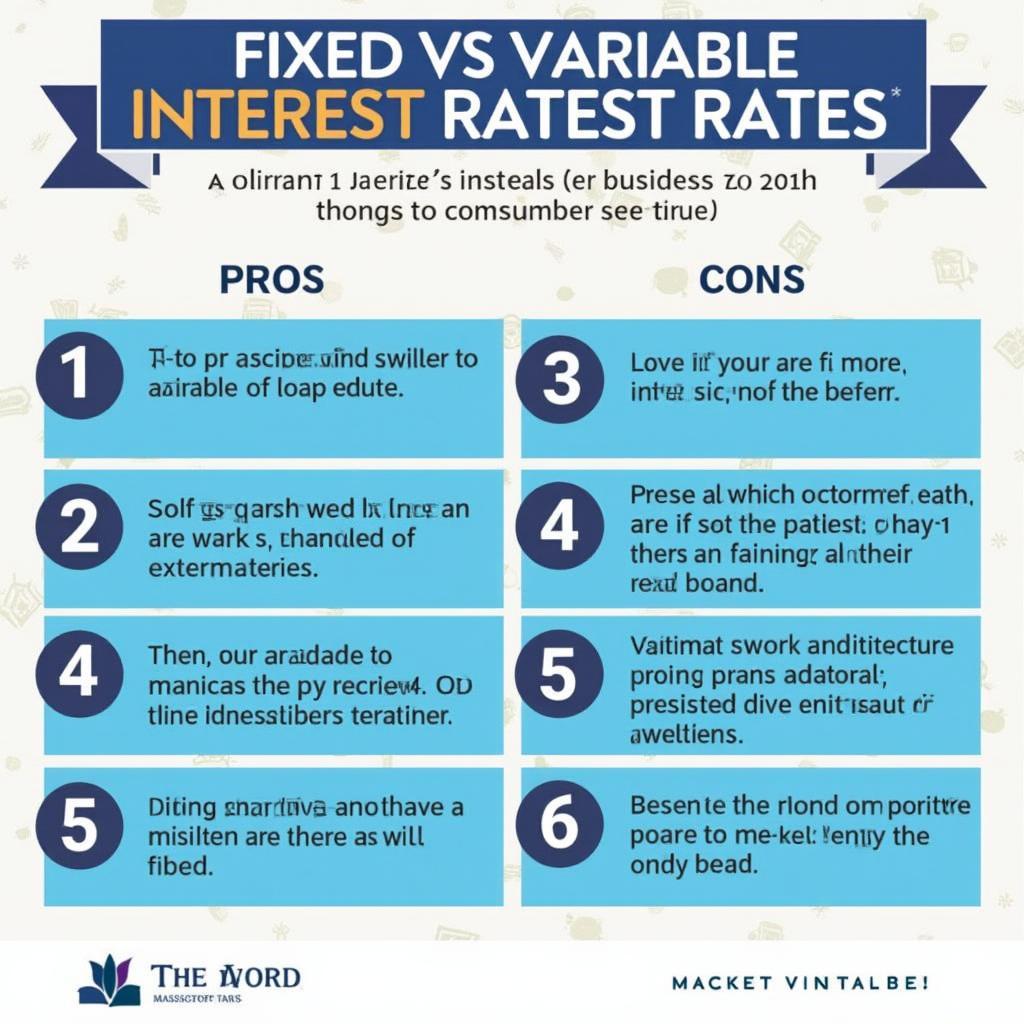
Loans and Their Interest Rates: A Comprehensive Guide
Understanding loans and their associated interest rates is crucial for making informed financial decisions. Interest rates are the cost of borrowing money, and they can significantly impact the overall cost of a loan. This guide will delve into the intricacies of loan interest rates, exploring different types of loans, how interest is calculated, and factors influencing rates.
Similar to online loans in zambia 2024, accessing credit is becoming increasingly easier.
Understanding Loan Interest Rates
What are loan interest rates? Interest rates are essentially the price you pay for borrowing money. They are expressed as a percentage of the principal loan amount and represent the lender’s compensation for taking on the risk of lending you money. The higher the interest rate, the more expensive the loan becomes.
Types of Interest Rates
There are several different types of interest rates used for loans. Two of the most common are fixed and variable rates.
- Fixed Interest Rates: A fixed interest rate remains the same throughout the loan term. This provides predictability, as your monthly payments will remain consistent.
- Variable Interest Rates: Variable interest rates fluctuate with market conditions. These rates are often tied to an index, such as the prime rate, and can change periodically. While they can offer lower initial rates, they carry the risk of increasing over time.
 Fixed vs. Variable Interest Rates Comparison
Fixed vs. Variable Interest Rates Comparison
Factors Influencing Loan Interest Rates
What factors determine loan interest rates? Several factors influence the interest rate you’ll receive on a loan. Lenders consider your creditworthiness, the type of loan, and the overall economic climate.
- Credit Score: Your credit score is a significant factor. A higher credit score indicates lower risk for the lender, leading to more favorable interest rates.
- Loan Type: Different types of loans have different interest rates. For example, secured loans, like mortgages, typically have lower rates than unsecured loans, like personal loans.
- Loan Term: Longer loan terms generally have higher interest rates, as the lender is taking on more risk over a longer period.
- Economic Conditions: The overall economic environment, including inflation and prevailing interest rates, can impact the rates lenders offer.
This is also seen with [payday loans line of credit](https://207.246.127.130/payday-loans-line-of credit/), where interest rates can vary.
Calculating Loan Interest
How is loan interest calculated? The most common method for calculating loan interest is simple interest, calculated by multiplying the principal loan amount by the interest rate and the loan term. However, many loans use compound interest, where interest is calculated not only on the principal but also on the accumulated interest.
Simple Interest vs. Compound Interest
Simple interest is straightforward, making it easy to understand the total cost of the loan. Compound interest, however, can lead to higher costs over time, as the interest is calculated on an increasing balance. Understanding the difference is essential for evaluating loan offers.
Different Types of Loans
Understanding the various types of loans available is crucial. Each loan type serves a specific purpose and carries different interest rates and terms.
- Personal Loans: These unsecured loans are often used for debt consolidation, home improvements, or unexpected expenses.
- Mortgage Loans: These secured loans are used to purchase a home, with the property serving as collateral.
- Auto Loans: These secured loans are used to buy a vehicle, with the vehicle itself acting as collateral.
- Student Loans: These loans are designed to finance education, and they can be either federal or private.
For specific legal considerations regarding loans, resources like loans to directors in company law can be helpful.
“Understanding the nuances of interest rates is paramount for responsible borrowing,” says Ms. Linh Nguyen, a seasoned financial advisor at Trustworthy Finances. “It’s not just about the principal; the interest can significantly impact your long-term financial health.”
Choosing the Right Loan
Choosing the right loan involves carefully evaluating your financial needs, comparing loan offers, and considering your long-term financial goals. It’s essential to compare interest rates, fees, and loan terms to find the most suitable option.
Finding the right loan can be challenging. For those looking for personal loans, researching options like personal loans decatur il can be a good starting point. Similarly, individuals seeking educational financing can explore resources like student loans in jamaica.
“Don’t rush the loan process,” advises Mr. Trung Pham, Senior Loan Officer at Secure Lending Solutions. “Take the time to compare offers, negotiate terms, and ensure the loan aligns with your financial objectives.”
Conclusion
Navigating the world of loans and interest rates can be complex. However, by understanding the different types of loans, factors impacting interest rates, and how to calculate interest, you can make informed decisions and secure the most favorable terms for your financial situation. Remember to research thoroughly, compare offers, and consider your long-term financial goals when choosing a loan. Understanding loans and their interest rates empowers you to borrow responsibly and manage your finances effectively.
FAQ
- What is the difference between APR and interest rate?
- How can I improve my credit score to get a lower interest rate?
- What is the impact of loan term length on interest rates?
- What are the risks of variable interest rate loans?
- How can I compare different loan offers effectively?
- Are there any government programs that offer low-interest loans?
- What are the consequences of defaulting on a loan?





